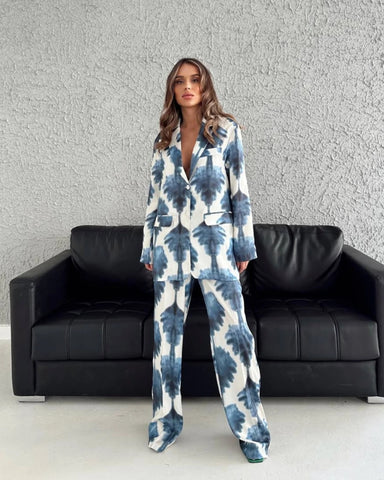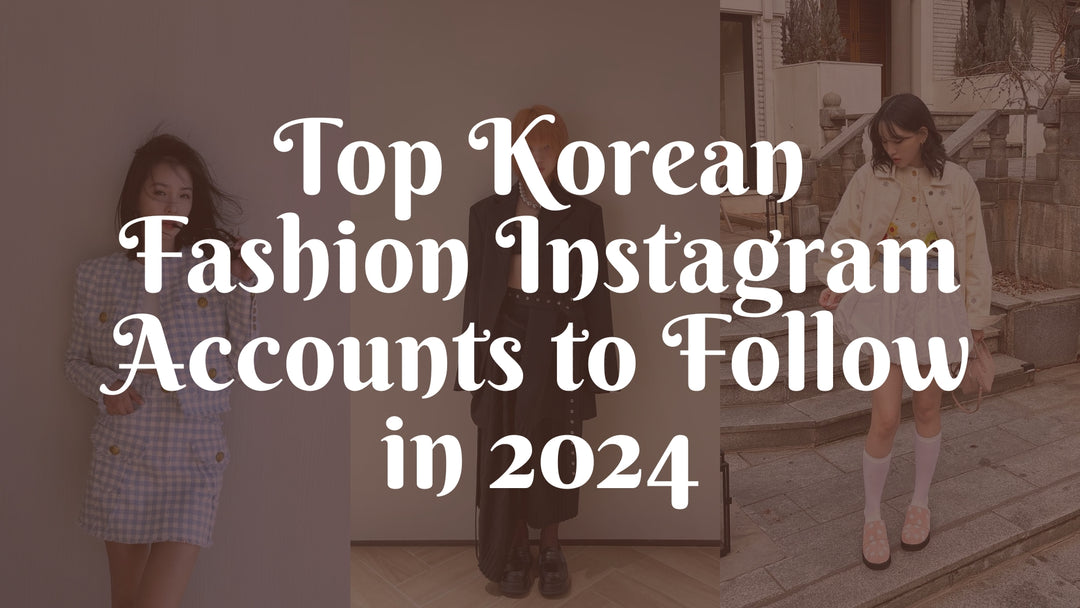Master Color Theory in Fashion: Know Why Skin Undertone Matters

Have you ever found yourself staring at that one piece of clothing that seems to never see the daylights? You know, the one that either looks too bland or too flashy against your skin. No matter how many times you try to make it work, it just doesn't seem to fit in.
Well, my friend, that's the power of color theory in fashion. But fear not! With a little bit of know-how and some creativity, you can easily transform that fashion faux pas into a fabulous statement piece!
In this article, we will simplify the concept of color theory in fashion and explain how it affects your skin. And by the end of this journey, you will feel nothing less than your own personal stylist.
What is Color Theory in Fashion?
Color theory in fashion analyzes the interactions between various colors to create visually appealing combinations and contrasts. Fashion design relies heavily on understanding the relationships between primary, secondary, tertiary, and other color schemes.
A visual representation of color organization known as the color wheel is used in color theory. It showcases the relationships between different hues, making it easier for designers to create harmonious and creative color palettes for their fashion collections.
Understanding the Color Wheel
Have you ever seen those cool circular diagrams with a ton of colors? That's what we call a color wheel. You can thank Sir Isaac Newton for this creation. Back in the day, he conducted prism experiments and discovered the natural light spectrum of colors. This spectacular discovery led to the invention of the color wheel. Nowadays, the color wheel is an essential tool used in the fashion industry.
The Basics of the Color Wheel
The color wheel is all about three primary colors - red, yellow, and blue. These are the most basic colors and can't be formed by mixing other colors. They are the foundation of all other colors.
To get the secondary colors, we mix two primary colors in equal amounts - green, orange, and purple are the results. And if we mix a primary color with a neighboring secondary color, we get tertiary colors like red-orange, yellow-green, and blue-purple. (See, it’s that simple)
Color Relationships and Harmony

Knowing about the color wheel can help us create awesome color combinations that look great together. There are different types of color schemes that we can use to achieve this aesthetically pleasing harmony of colors.
- Complementary Colors: They are the magic colors that are positioned opposite to each other on the color wheel, creating a stunning high-contrast look that can make your outfits come to life with a vibrant and energetic vibe!
- Analogous Colors: These colors are the secret to creating a harmonious and visually stunning color scheme. By choosing colors that are next to each other on the color wheel, you can achieve a cohesive, vibrant look that will make your outfits pop.
- Triadic Colors: They are a trio of colors that are evenly spaced around the color wheel, creating a balanced and visually striking effect. With their dynamic appeal, Triadic Colors can add a pop of excitement to anything.
Using the Color Wheel in Fashion
When it comes to color theory in fashion, the color wheel is a big help for stylists and designers to mix and match colors that work well together. By using complementary colors, you can create a bold and eye-catching outfit, while analogous colors can give you a more subtle and coordinated look.
The key is to know the feelings and vibes that different colors can evoke and use them to create the mood and style you want. And that is called the psychology of colors in fashion.
Know How Color Psychology Works in Fashion
The impact of colors goes beyond just being visually pleasing. It also affects our emotions and how we perceive things. By understanding color psychology, we can make fashion choices that not only look great but also make us feel great.
Warm colors like red, orange, and yellow can get you pumped up and excited. They're bold and attention-grabbing, which is why you see them a lot in fashion when you want to make a statement.
On the other hand, colors like blue, green, and purple are chill and calming. They help you relax and feel at peace, which is why you see them in designs that are meant to be soothing and tranquil.
Wearing neutral colors such as black, white, brown, and grey can make you appear authoritative, elegant, and secure. These colors are very versatile and can be incorporated into different styles to create a sophisticated look.
Know Why Color Theory for Skin Tone Matters
Ready to discover the secret to enhancing your natural beauty through color matching? The right colors can make your skin shine, your eyes pop, and give you an overall radiance that will turn heads.
Below, we've broken down the best colors for each skin tone (Your skin's undertone is the subtle hue beneath your skin's surface that affects how your skin appears in different lighting.) You can have fun experimenting with different hues and creating a wardrobe that's uniquely you. Get ready to shine like the fashionista you are!
1. Warm Skin Tones
If you're someone who has warm skin tones, then you have a natural radiance that deserves to be accentuated with the right colors. It can be tough to figure out what those colors are, but if you notice golden, peach, or bronze undertones in your skin or if your veins appear more green than blue, then it's likely that you fall into this category.
Don't worry, we're here to help you find the perfect colors that will make you look and feel your best.
A. Ideal Colors
- Embrace warm colors like amber, gold, and orange, as well as earthy hues.
- Richer versions of cool colors like olive, moss green, and orchid are also great options.
- Neutrals like taupe, cappuccino, cream, and mushroom gray will enhance your overall look.
- These colors will bring out the natural warmth of your complexion.
B. Colors to Avoid
- Avoid clothing or accessories with icy blues or jewel tones if you have a warm skin tone.
- Sapphire or amethyst colors can create a washed-out effect on your skin tone.
- These colors can make your skin appear dull and lifeless.
2. Cool Skin Tones
If you have cool skin tones, your skin might have pink, rosy, or blue undertones, and your veins might look blue or purple. Cool skin tones look great with colors that remind you of the ocean or winter. Just embrace your unique tone, and remember that you are beautiful just the way you are.
A. Ideal Colors
- Bright blues, emeralds, and deep purples make you look great.
- Frosty shades of lavender, ice blue, and pink can light up your face if you have cool-toned skin.
- Ruby, bright rosy red, and pale yellows are great warmer options.
- If you prefer neutrals, then cool gray, bright white, and navy will give you a perfect match.
B. Colors to Avoid
- If you have cool skin tones, avoid shades like orange, tomato red, and strong yellows as they may not be particularly flattering.
- Pastel and neon shades should also be avoided as they can clash with the cool undertones present in your skin.
- These colors can lead to an unflattering appearance and should be replaced with cooler tones.
3. Neutral Skin Tones
Lucky you if you have a neutral skin tone! You can wear any color you want without worrying about the undertones. No pink, no olive, no yellow - nothing to get in the way of your statement. You're like a chameleon that can blend in with any color. How cool is that! (Not the color kind of cool tho)
A. Ideal Colors
- Opt for subtle or toned-down shades when choosing colors.
- Dusty pink, jade green, cornsilk yellow, and lagoon blue are perfect choices.
- Consider off-whites, coffee, mid-range grays, and black for neutral colors.
- Don't be afraid to try a bright, true red which could work wonders for you.
B. Colors to Avoid
- Experiment with different colors to find your personal style.
- Be cautious with electric blue and magenta as they may not complement your undertone.
- Don't limit yourself to a specific color palette and try new shades to see what works for you.
Universal Colors
There are some colors that look good on everyone, regardless of their skin undertones.
- Pure white
- Light blush pink
- Teal
- Eggplant purple
These colors are universally flattering and can complement any skin tone due to their balanced combination of warm and cool tones. If you're unsure about what colors to wear, these shades are a safe bet to add to your wardrobe.
Other Aspects of Color Theory Fashion: Color Theory in Makeup, Hair Color Theory
Color theory is an essential aspect of the fashion industry, and it is not limited to creating outfits. It also extends to makeup and hairstyles. In makeup, color theory is used to create a cohesive and harmonious look that complements the outfit. The use of complementary colors and color-blocking techniques can make a bold statement or create a subtle effect.
1. Color Theory Makeup
One important aspect of selecting the perfect makeup colors that can enhance your natural beauty is understanding your skin's undertone. Once you have identified your undertone, choosing the right makeup colors becomes much easier.
- People with warm undertones should opt for makeup colors with peachy and warm brown shades, as they complement their skin.
- On the other hand, people with cool undertones should go for makeup colors with pink and cool blue shades to bring out the best in their skin.
2. Hair Color Theory
Selecting the perfect hair color can be a daunting task, and it largely depends on your natural skin undertones.
- If you have warm undertones, it's best to choose hair colors that complement your complexion, such as golden, caramel, or auburn shades. These shades can add depth and warmth to your overall look.
- On the other hand, if you have cool undertones, you can opt for hair colors like ash blonde, platinum, or jet black. These shades can enhance your natural skin tone and give you a bright, vibrant appearance.
By selecting the right hair color that matches your skin undertones, you can achieve a stunning and flawless look.
Example of How Nolabels Uses Color Theory in Fashion for Women
We use our knowledge of color psychology to design pieces that not only look great but also make the wearer feel confident and empowered.
1. Sleeveless Denim Vest and Red Skirt

This outfit displays a visually striking complementary color scheme that is both classic and timeless. It features a light blue denim vest that exudes a cool-toned vibe, which is paired with a warm and vivid red skirt. The denim vest's pattern is subtle and adds texture to the ensemble without overwhelming the solid boldness of the red skirt.
This allows the skirt to be the focal point of the outfit, which accentuates its vibrant hue. The contrast between the blue denim and the red skirt creates a dynamic energy.
2. Aqua Dress with Orange and Yellow Floral Design

The use of analogous colors (colors next to each other on the color wheel), like aqua, orange, and yellow, create a harmonious and vibrant look. The dress's large floral pattern is an effective use of color blocking, a technique that leverages blocks of colors to make a bold statement.
This dress evokes the freshness of spring or summer and suggests creativity and optimism.
3. Tie-Dye Blue and White Suit

The tie-dye pattern of this suit employs a monochromatic color scheme with different shades of blue, creating a cohesive and calming effect. This outfit uses the psychological impact of blue to evoke trust and stability, while the white adds a sense of simplicity and cleanliness.
Each of these outfits demonstrates how NoLabels might use color theory to design clothes for women, aiming to evoke specific emotional responses while ensuring the outfits are both stylish and expressive.
The chosen colors and patterns can enhance the wearer's natural features, communicate a desired image, and resonate with personal style preferences, all while staying in line with the color theory principles discussed in the blog.
Final Thoughts
Color theory in fashion is way more than just a bunch of rules for mixing colors together. It's kind of like a secret code that tells people how you're feeling and what you're trying to say without you even speaking a word! It's also a way for you to show off your personality and style.
When you know how colors work, you can use them to make yourself look (and feel!) really confident, relaxed, energetic, or classy. Fashion isn't just about wearing what's popular - it's about saying something about who you are. Each color has a different story to tell in.
So next time you pick an outfit, think about what you're telling the world with your colors!
Frequently Asked Questions
1. How does color theory in fashion impact my daily choices?
Color theory can help you select outfits that complement your skin tone, enhance your mood, and fit the occasion, ensuring you look and feel your best.
2. Can color theory help me look more professional at work?
Absolutely. Colors like navy blue, black, and gray convey professionalism, while a pop of a brighter color can show creativity and individuality.
3. Does color theory apply to accessories as well?
Yes, accessories are a great way to introduce color theory into your look, be it through complementary, analogous, or monochromatic color schemes.
4. How can I use color theory to appear more approachable?
Warm colors like peach, soft yellows, or light pinks can make you appear more friendly and approachable.
5. Can I use color theory to make a small wardrobe more versatile?
A: Definitely. Creating a wardrobe based on a harmonious color palette allows for mix-and-match versatility.
6. What colors should I wear to feel more confident?
Bold colors like red or strong blues can boost confidence. Choose a hue that you feel great in.
7. Is it okay to mix warm and cool colors in an outfit?
While traditionally color theory keeps them separate for harmony, fashion is about personal expression, so if you feel good in the mix, go for it!
8. How can I figure out which colors work best for my skin tone?
Hold different colored fabrics up to your face in natural light and see which ones make your skin glow.
9. What color should I wear if I want to stand out in a crowd?
Vibrant colors like electric blue, emerald green, or bright yellow will make you stand out.
10. How often do color trends change in fashion?
Color trends can shift seasonally and are often influenced by cultural events and fashion industry forecasts.


